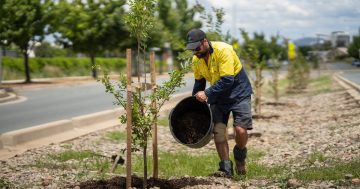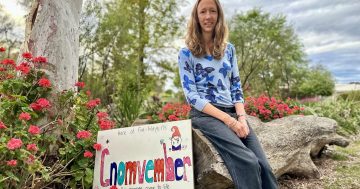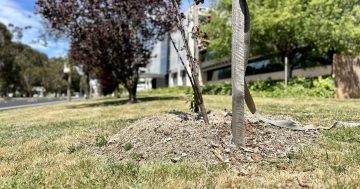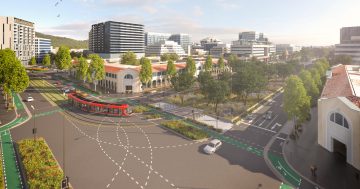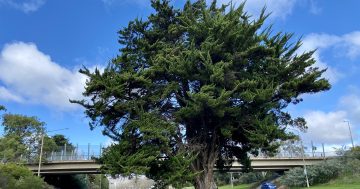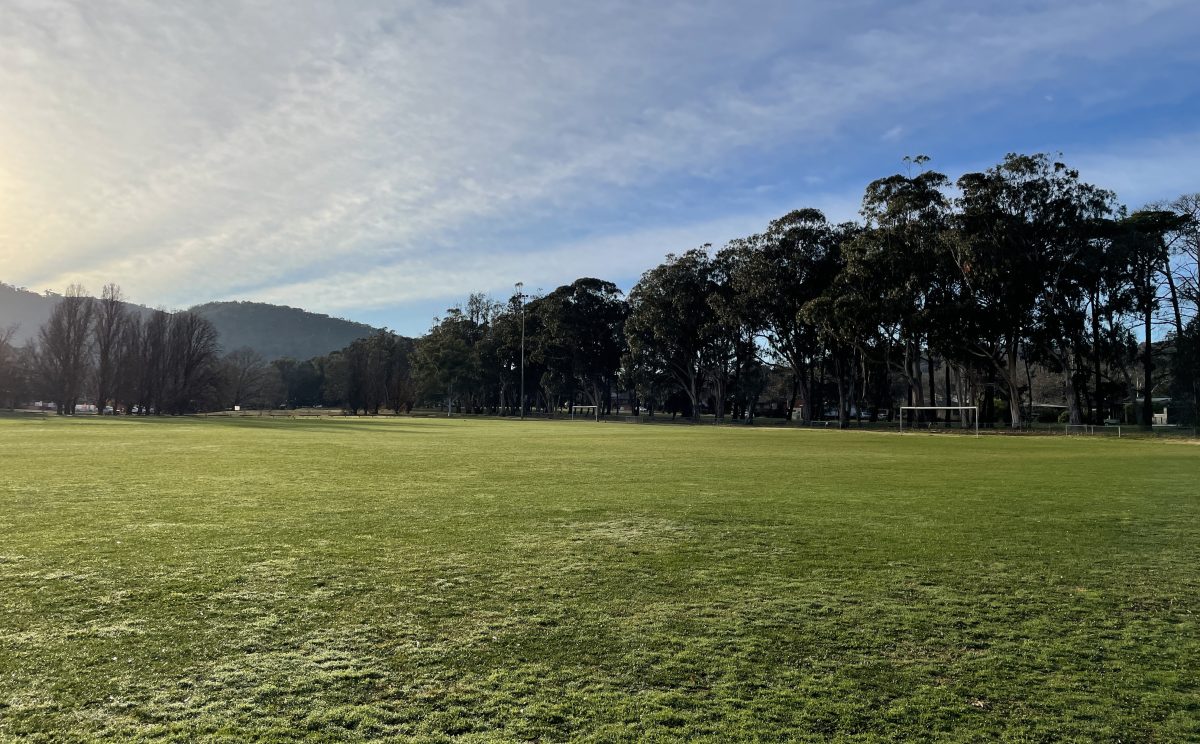
It’s been discovered that the Hackett Oval trees were originally planted as a screen for a future cemetery. Photo: Chris Mobbs.
Take a wander through Hackett and you’ll notice an avenue of pine and eucalypt trees that are clearly older than the suburb.
Now the history of the Hackett Oval trees is visible for everyone to discover with the unveiling of a Canberra Tracks sign, making it part of the tapestry of the Territory’s history.
Hackett Community Association chair Chris Mobbs said it all started when the group was writing a book on the suburb’s history in 2018.
“I would regularly walk along by the trees and be fascinated by their size,” he said.
“Residents told me they had been there when the suburb was built back in the 60s, but it was still unclear why they were there.”
Various theories were explored into the trees’ origin: were they planted by Charles Weston in the period between 1913 and 1926 as part of his role as officer in charge of afforestation? Were they part of the revegetation of Mount Majura in the late 1920s, or planted as a windbreak for the original aerodrome in Dickson?
But none of these possible explanations panned out.
In 2021, Chris spoke with Dickson Residents Group chair Jane Goffman, who said she had seen an old map that made reference to a future cemetery for Hackett.
Chris dove into the records of the ACT Archives and the National Library of Australia Trove entries, and found references from the late 1920s to two future cemeteries for Canberra – one in the north and one in the south.
“Drilling through the files, more and more was coming together to show Hackett was the chosen site for the northern cemetery,” he said.
An aerial photo from the 1950s showed the trees were already well established, while another reference to a ‘plantation’ confirmed the trees had been planted around the 1930s.
“Suddenly the mystery had been solved,” Chris said.
“They had been planted to be a screen between a future cemetery and a future suburb.”
Ever wondered about the avenue of trees on Hackett Oval? Some community sluething, info held in @TroveAustralia revealed that these 100 year old trees were probably part of a planned cemetery that never went ahead. Now a #cb tracks sign solves the mystery #heritagefestival2023 pic.twitter.com/VjVK94rs1s
— Rebecca Vassarotti MLA for Kurrajong (@RebeccaVassarot) April 11, 2023
Luckily, when the National Capital Development Commission began planning the suburbs of Hackett, Downer and Watson in the 1960s, the trees were left alone.
Chris said it could have to do with the philosophy that Canberra is a “planned city”.
“It’s a case study that supports that approach,” he said.
“They worked with the trees … and they became an integral part of the suburb.
“It’s a fantastic legacy made 100 years ago.”
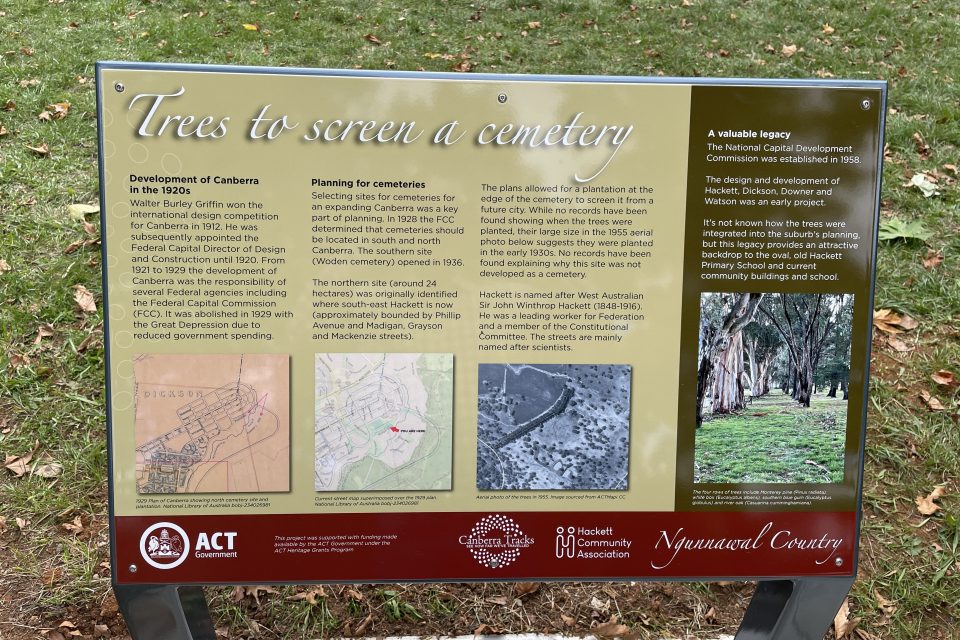
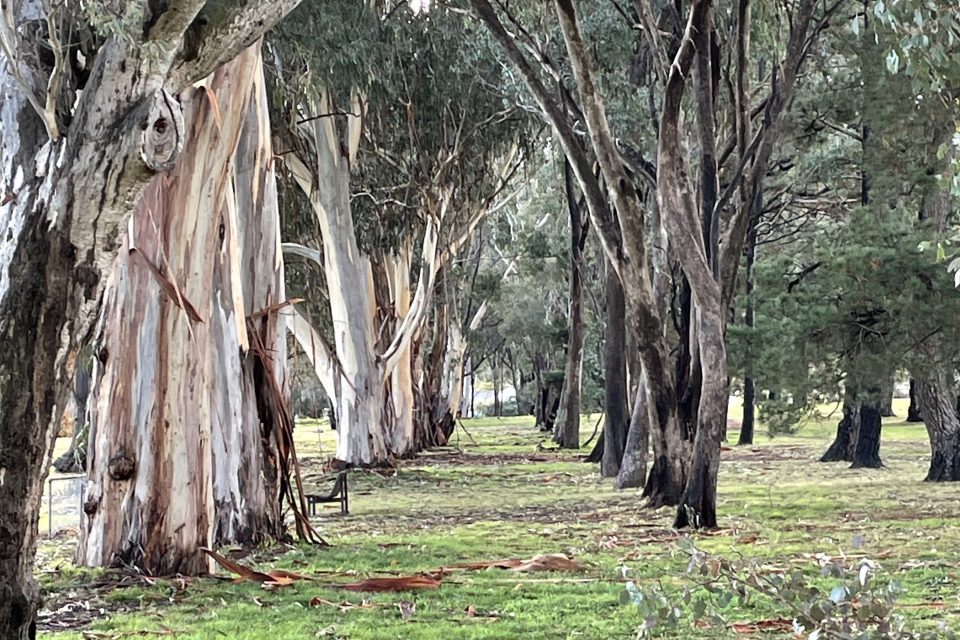

While boreholes were drilled in the area to test the suitability of the chosen cemetery site, for some reason the plan never went ahead.
Chris said he still hadn’t been able to find the records to state what changed.
“Hopefully we’ll get that one day,” he said.
The association has previously tried to have the trees added to the ACT Tree Register, but they didn’t meet the criteria.
They currently have an application filed to have the Hackett Oval trees placed on the ACT Heritage Register, but that process has been held up after the Heritage Council was sacked late last year.
But Chris said winning a heritage grant to have a Canberra Tracks sign added to the plantation signified its importance to the suburb’s heritage.
“Some residents have been around for years … now we can show them this is a story behind your suburb,” he said.
“It fills in a missing link for this part of Canberra.”
You can discover even more about Hackett’s history as part of the ACT Heritage Festival, which includes a mid-century modern exhibition currently on display at the Hackett shops showing how Californian architecture came to Canberra.













